
Monitor Arm vs. Stand – Which One Reigns Supreme?
Table of Contents
Welcome to our comprehensive article on the age-old debate: Monitor Arm vs Stand. If you're searching for the perfect dual monitor setup, you've come to the right place. In this article, we will delve into the pros and cons of monitor arm vs. stand, allowing you to make an informed decision based on your specific needs and preferences.
Whether you're a professional seeking optimal ergonomics or a casual user aiming for flexibility and space-saving solutions, this article will provide valuable insights to help you choose between the two. Get ready to unravel the secrets of monitor stand vs. arm and discover which one reigns supreme for your multiple monitor setup.
Comparison Table: Monitor Arm vs. Monitor Stand
| Feature | Monitor Arm | Monitor Stand |
|---|---|---|
| Adjustability | Highly adjustable; can tilt, swivel, rotate, and move vertically and horizontally | Limited adjustability; typically height adjustment only |
| Desk Space | Frees up desk space by lifting monitor off the desk | Occupies desk space |
| Ergonomics | Allows for precise positioning for better ergonomics | Basic ergonomics; may require additional stands for optimal positioning |
| Flexibility | Supports multiple configurations; can be repositioned easily | Fixed position; less flexibility |
| Number of Monitors | Often supports multiple monitors with a single mount | Usually supports one monitor per stand |
| Aesthetic | Sleek, modern look; minimalistic | Can be bulkier; may not look as clean |
| Installation | Requires clamping or drilling into desk | Simple setup; usually no installation needed |
| Cable Management | Often includes integrated cable management | Limited cable management options |
| Price | Generally more expensive | More budget-friendly |
| Portability | Less portable; fixed to the desk | Easily movable |
Monitor Arm vs. Monitor Stand: Factors to Consider
Ergonomics and Comfort
Ergonomics plays a crucial role in maintaining a healthy and comfortable workspace. Monitor arms excel in this area by offering extensive adjustability. You can effortlessly raise, lower, tilt, and swivel your monitor to achieve optimal viewing angles, reducing strain on your neck, shoulders, and eyes.
On the other hand, between monitor arm vs. stand, while some monitor stands provide basic height adjustment, they may offer a different level of flexibility and customization than monitor arms, potentially compromising your comfort during extended periods of use.
Installation and Setup
Monitor arms typically require installation, which involves attaching the arm to the desk or mounting it on a wall. This process may require some tools and basic DIY skills. On the other hand, monitor stands usually come pre-assembled and can be easily placed on the desk, making them more convenient for those who prefer a hassle-free setup.
Flexibility and Workspace Optimization
Flexibility and workspace optimization are important considerations between monitor arm vs. stand, especially if you require multi-monitor setup tips or need to switch between landscape and portrait orientations. Monitor arms provide unparalleled flexibility, allowing you to reposition and rotate your monitors to accommodate your workflow effortlessly. This adaptability is particularly beneficial for design, programming, or content creation professionals.
Monitor stands, although offering stability and basic height adjustment, may provide a different level of customization and versatility, limiting your ability to create an efficient and adaptable workspace.
Design and Aesthetics
Monitor arms often offer sleek and minimalistic designs that enhance the overall aesthetics of your workspace. They create a clean and modern look by reducing clutter and allowing for a floating monitor effect. Monitor stands come in various designs but may have a more traditional or bulkier appearance due to their base.
Space Efficiency and Organization
Efficiently utilizing desk space is essential, particularly in compact work environments. Monitor arms excel in this area by elevating the monitor off the desk surface. By doing so, they free up valuable workspace, allowing you to declutter and organize your desk.
Managing different monitor cable types features of monitor arms further contributes to a clean and tidy setup. On the other hand, while providing elevation, monitor stands may occupy valuable desk space, limiting your available working area and potentially hindering your productivity.
Pricing and Value
Monitor arms generally have a higher upfront cost compared to monitor stands. However, they offer long-term value by providing ergonomic benefits, flexibility, and improved workspace organization. Monitor stands, on the other hand, tend to be more budget-friendly but may have limited adjustability and features.
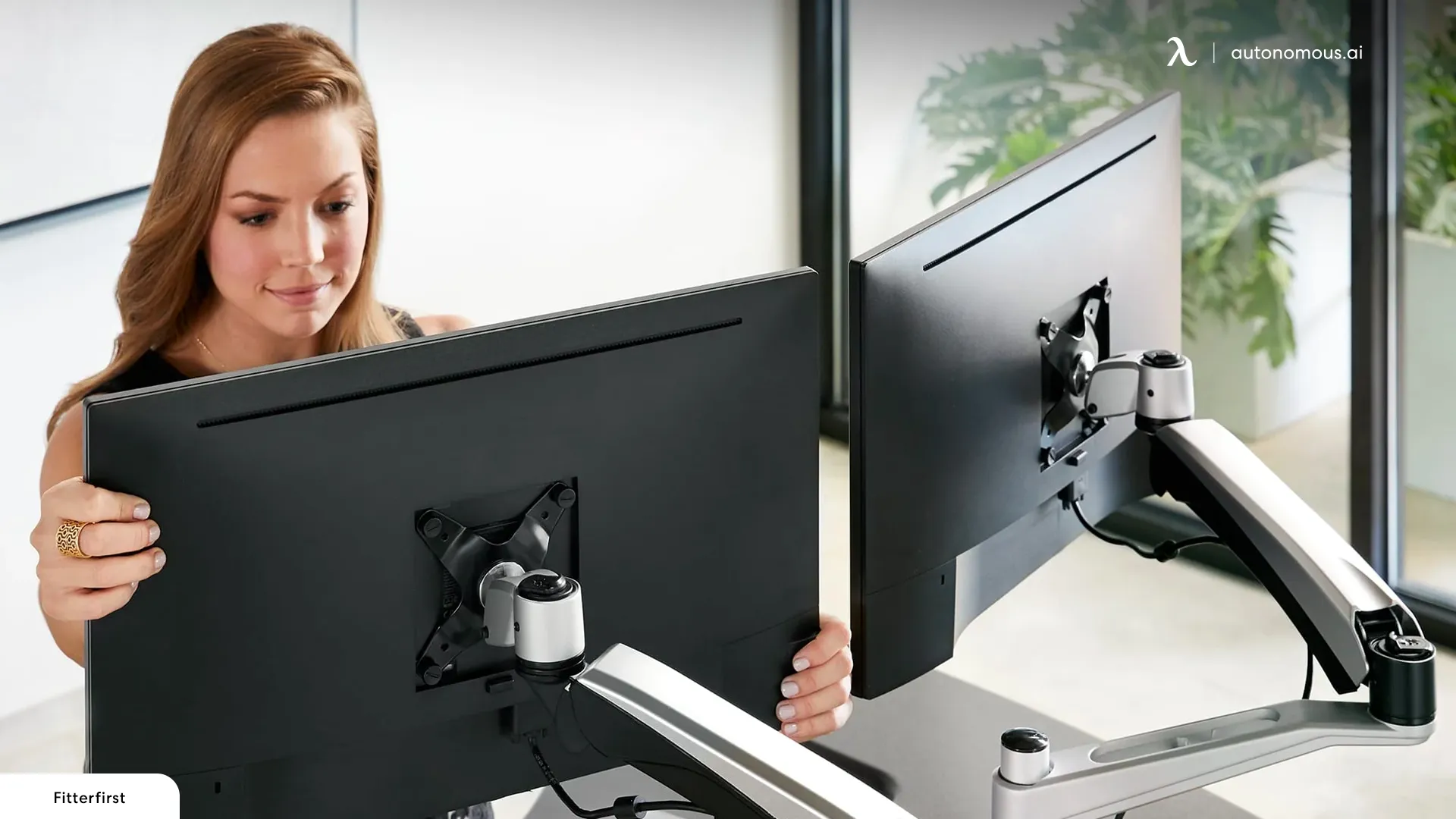
Types of Monitor Arms
1. Single Monitor Arm
Designed to support one monitor, these arms offer adjustable height, tilt, swivel, and rotation to achieve optimal viewing angles. They are ideal for individual workstations where only one monitor is needed.
2. Dual Monitor Arm
These arms can support two monitors side by side. They provide the same adjustability as single monitor arms but are designed to hold two screens, making them perfect for multitasking and enhancing productivity.
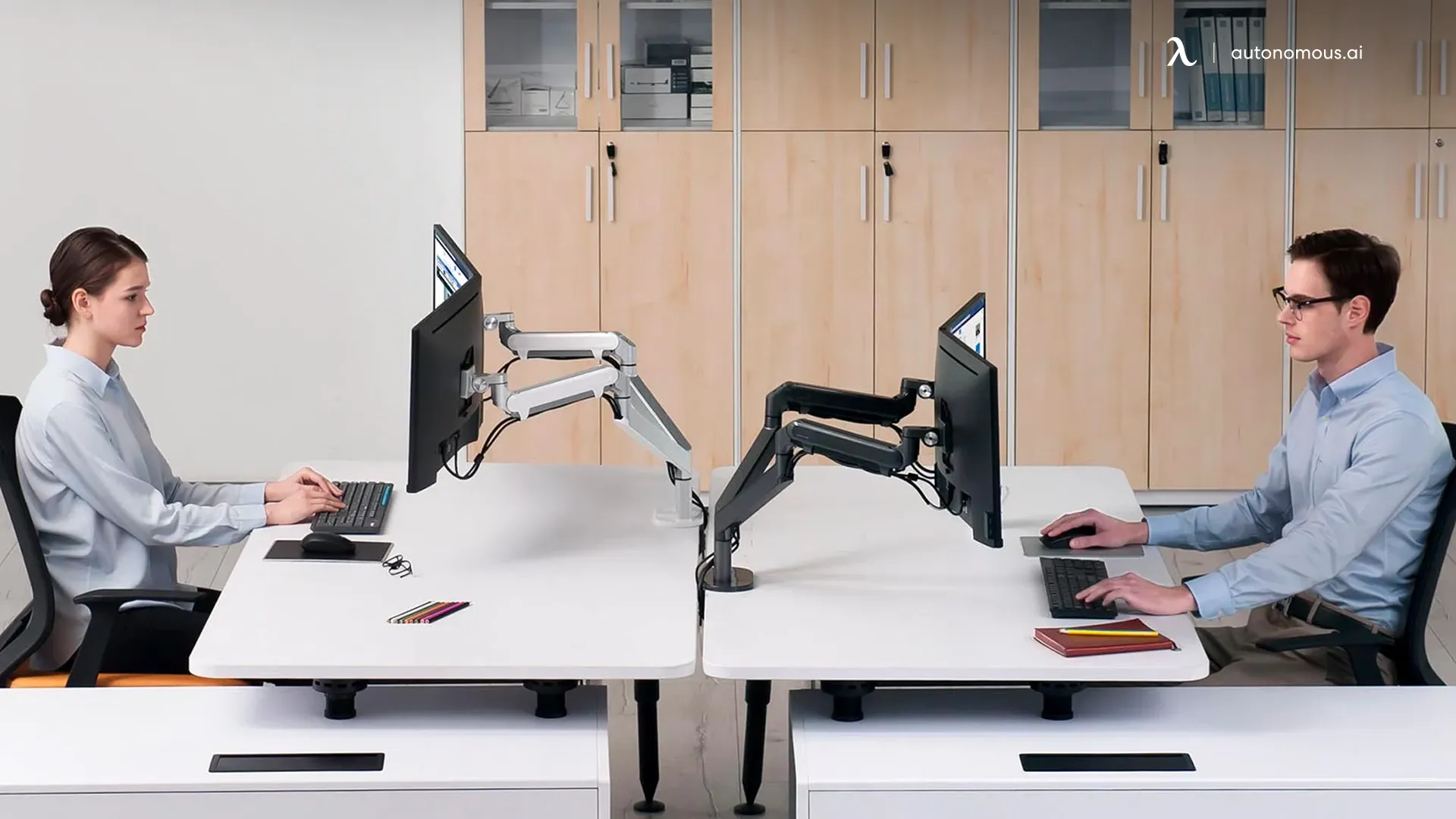
3. Triple and Multi-Monitor Arms
Built to support three or more monitors, these arms are commonly used in professional settings like trading floors, control rooms, or gaming desk setups. They allow for a seamless multi monitor gaming setup experience with extensive adjustability.
4. Gas Spring Monitor Arm
Utilizes gas spring mechanisms for easy and smooth adjustments. These arms provide effortless height and angle adjustments and are often found in premium models for their superior flexibility and ease of use.
5. Pole-Mounted Monitor Arm
Features a vertical pole on which the monitor arm can move up and down. This type is often more budget-friendly and provides basic height and tilt adjustments.
6. Wall-Mounted Monitor Arm
Attached to the wall instead of the desk, these arms save desk space and provide a clean, clutter-free look. They offer similar adjustability to desk-mounted arms but require wall installation.
7. Laptop Monitor Arm
Designed specifically for laptops, these arms allow you to position your laptop screen ergonomically while freeing up desk space. Some models can support both a laptop and a monitor.
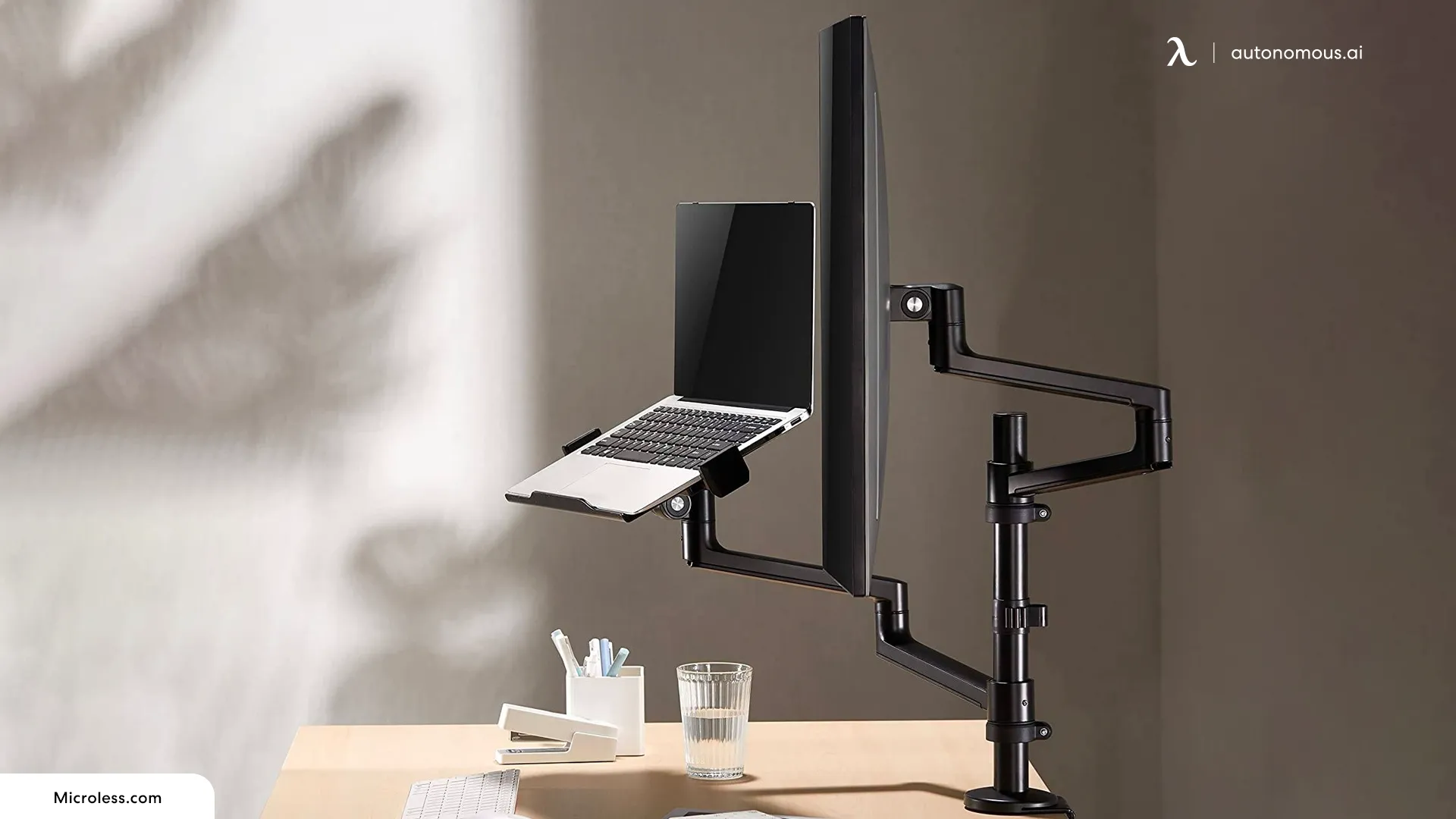
Types of Monitor Stands
1. Basic Monitor Stand
A simple, fixed-height stand that elevates your monitor to a more comfortable viewing level. These stands are often budget-friendly but offer limited adjustability.
2. Adjustable Monitor Stand
Allows for height adjustments to suit different users' ergonomic needs. These stands can range from simple risers to more complex stands with multiple height settings.
3. Stackable Monitor Stand
Consists of stackable components that let you add or remove sections to adjust the height. These stands provide flexibility for stacked monitor setup and are easy to customize based on your needs.
4. Monitor Riser with Storage
Combines monitor elevation with storage solutions, such as drawers or shelves, to help organize desk space. These stands are practical for small workspaces needing extra storage.
5. Dual Monitor Stand
Designed to support two monitors side by side. These dual monitor stands usually have a wide base or two separate platforms to accommodate multiple screens.
6. Vertical Monitor Stand
Supports monitors in a vertical orientation. Ideal for specific tasks that benefit from a portrait mode display, such as coding, reading documents, or graphic design.
7. Portable Monitor Stand
Lightweight and easy to carry, these stands are designed for use on the go. They are often foldable and provide a simple way to elevate your monitor wherever you need to work.
8. Rotating Monitor Stand
Allows for the monitor to be easily rotated between landscape and portrait orientations. These stands provide flexibility for various tasks and viewing preferences.
Conclusion
When it comes to the ongoing debate of monitor arm vs. stand, the decision ultimately depends on your specific requirements and the desired aesthetics of your minimal desk setup. Both options have their unique advantages.
Consider your workflow, the level of customization you need, and the available desk space to make an informed decision.
Spread the word
.svg)

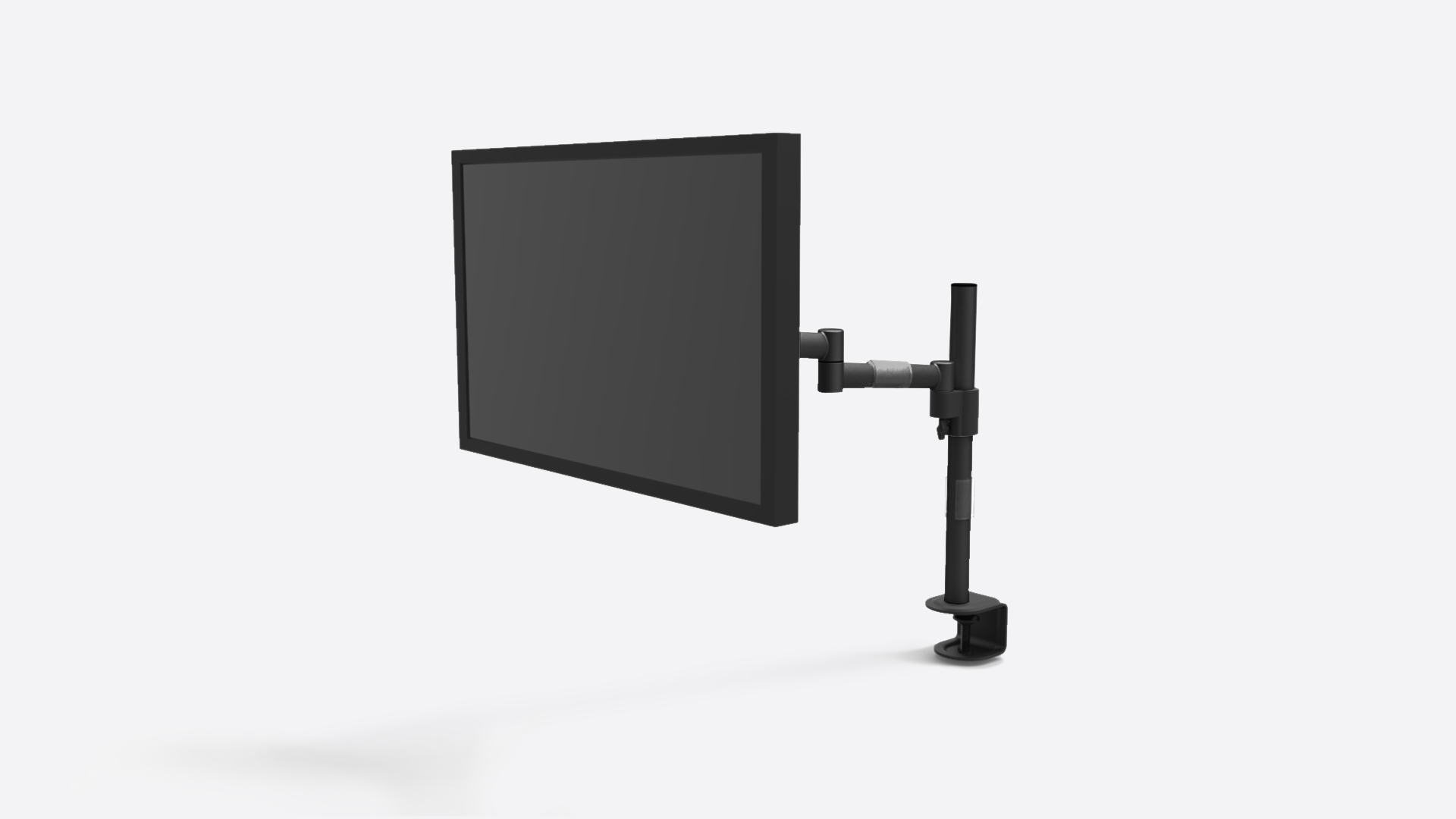

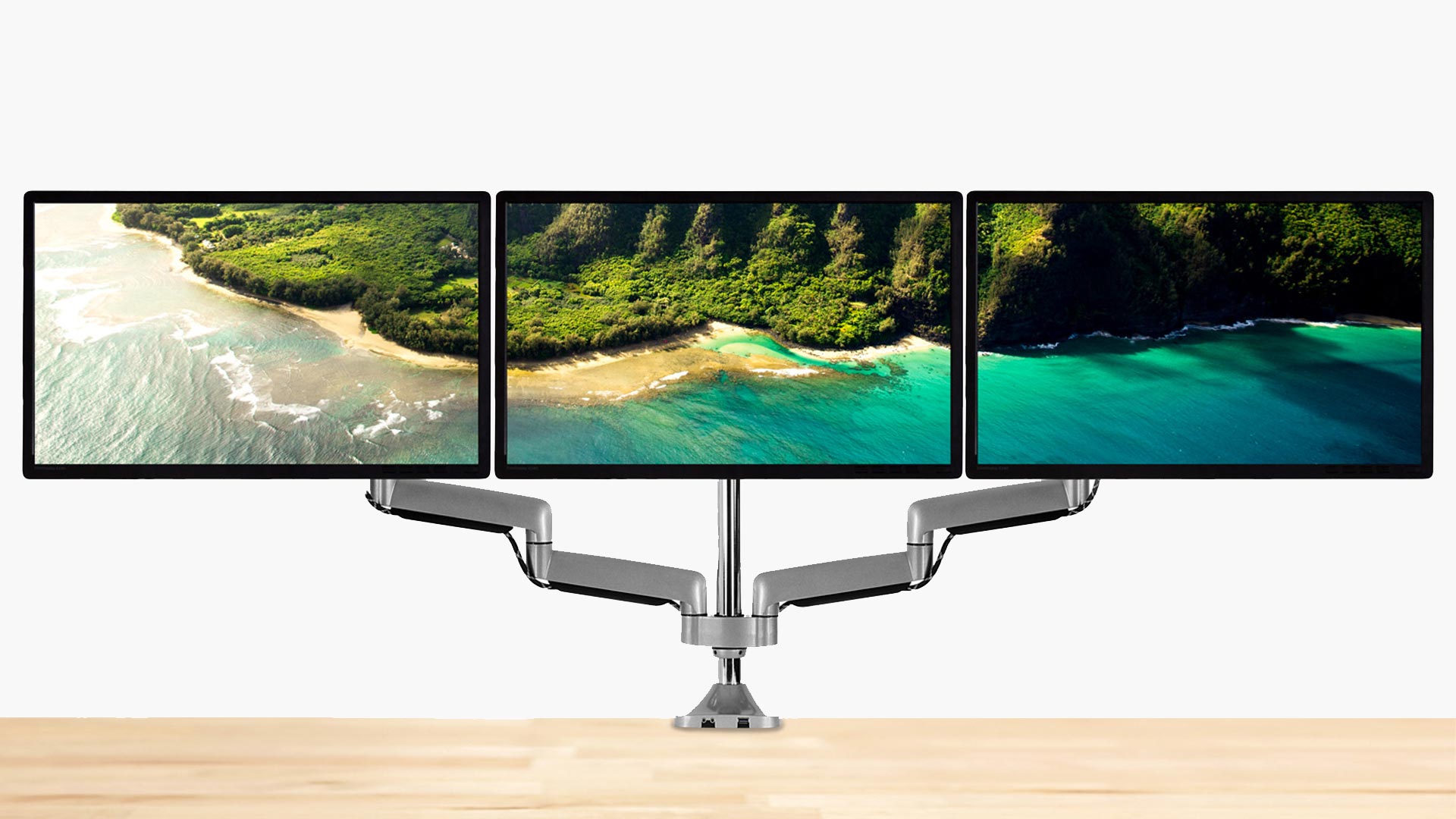

.jpg)

.jpg)
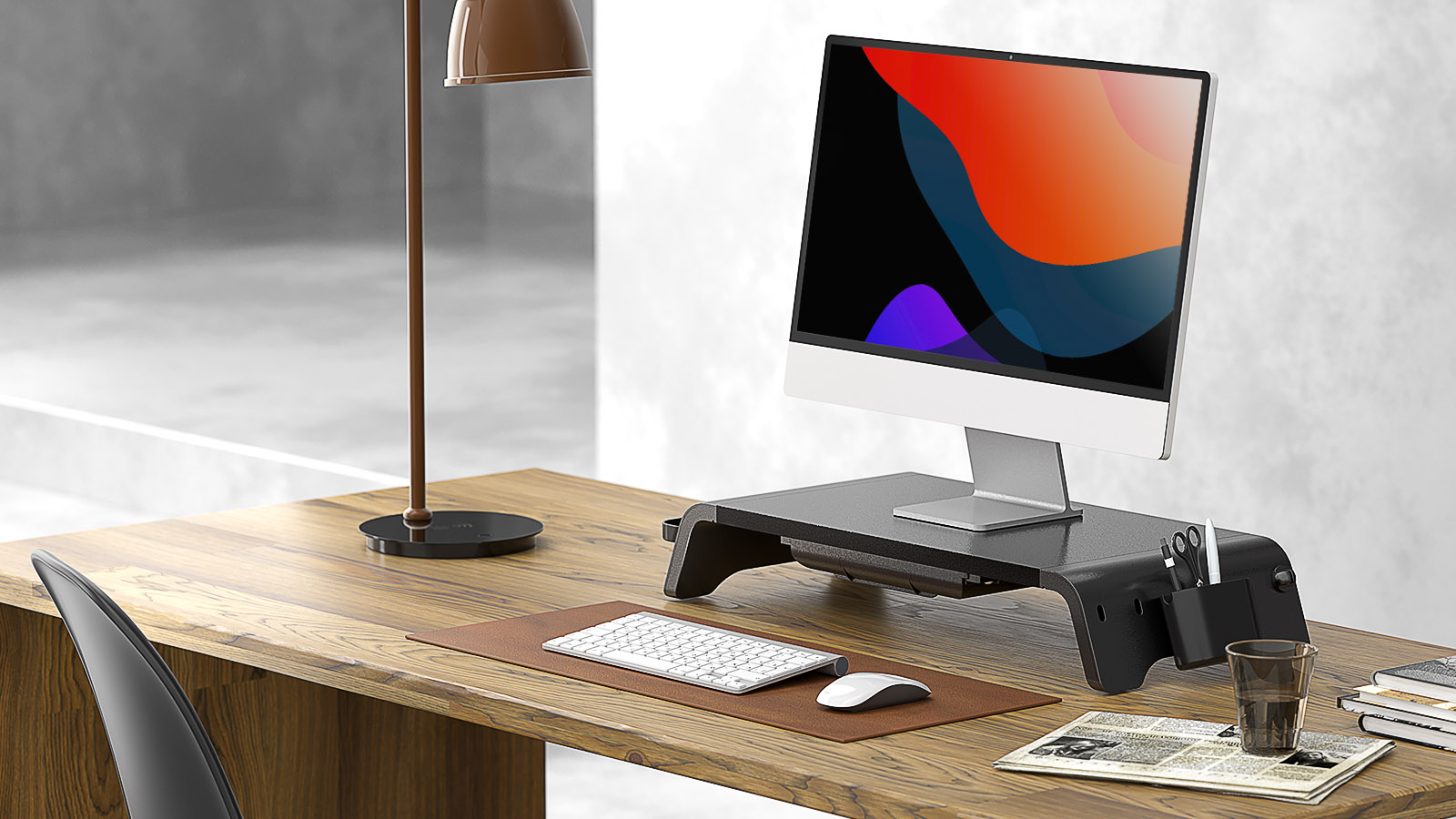


.jpg)







